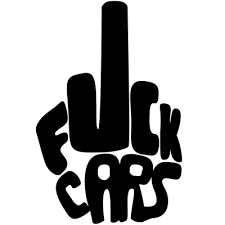Even if you think what you would say is obvious, please add. This is genuinely something I think makes sense regarding local bus routes given the longevity of light rail and how infrequently routes change, but I also suffer from confirmation bias, so I’m hoping for reasons this would be a terrible idea but obviously would prefer reasons it would be an even more amazing idea than I thought.
Light rail/trams are better especially for avenues etc. But busses are more flexible, and you usually need a combination of both for best results
This.
I think of buses as the caterpillar to a tram’s butterfly.
You can start with a comprehensive bus network, and as a particular route stabilizes and the bus starts struggling to meet throughput needs, that is an indicator that a tram may be worthwhile.
Starting w/ a tram line is a pretty big financial bet that it will be useful/needed, as once you build it, you’re locked-in to that specific route.
Buses for longer journeys make sense. We have a bunch of buses in London that run from the city centre out towards the green belt. Buses for those especially long journeys makes sense.
Why not just build a train for long journies? Cheaper over time, more capacity, and reduces road dependency.
We need more tube lines to be fair. But also I want to service as many people as possible.
Buses are awful for long journeys. Trams for longer journeys make sense. You need the buses to get you to the tram stop.
Pretty much the point of trams are that they’re in populated areas, are in walking distance, and have many stops. They’re local public transport.
In cities they’re equivalent to buses, and in many countries existing trams where replaced by bus routes starting in the 1960s.
If you need longer and faster transport, metro and light rail are the modes to bring people to and around town.
Have you actually ever seen the tram network in North Rhine and Westphalia, Germany? Also in many places in the world the replacement of trams by buses has been since seen as a mistake and there are plenty of examples of extensive new trams networks introduced and in planning in cities where they got rid of them in 1960s.
Have you actually ever seen the tram network in North Rhine and Westphalia, Germany?
Yes, thank you, I was born there. What is it you’re trying to tell me?
Also in many places in the world the replacement of trams by buses has been since seen as a mistake and there are plenty of examples of extensive new trams networks introduced and in planning in cities where they got rid of them in 1960s.
Yes, thank you, I live in Berlin, the city where one part decided to trash it’s tram network, replaced it with buses, and is now struggling to get it back.
Still not sure what you’re trying to tell me, where did I say it was a good idea? I said the two modes are comparable.
I would argue they’re not equal. Bus makes a bad replacement for a tram and tram can’t really replace the bus if there are no tracks. The reason why I was asking is because Essen and Mühlheim a.d. Ruhr plus some nearby areas have got sections where trams aren’t confined to just the populated areas and do not have many stops and outside the city core they aren’t Stadtbahn, but are that and much more outside the urban areas, act part of the way like the good old Strassenbahn but are marked as Stadtbahn. I guess I don’t really have a point here, just rambling. But really there’s big difference between what you can offer on rails (if you don’t make stupid planning decisions and your system isn’t falling into disrepair) and by buses. Yes, they’re comparable mostly in the way that they’re both moving dozens of people per unit. In everything else, how comparable are they?
Well, like I said, I agree buses aren’t a good replacement, but they’re comparable in the way they’re used in cities: as a short to medium ranged local transport. You wouldn’t want to take the bus from one end of Berlin to the other, you would take the S-Bahn, because that’s what it’s for.
Compare the bus network with the tram network in East Berlin. The buses (usually) run where the trams don’t, but they have a similar amount of stops. Of course there’s overlap between the modes, but the general idea is: tram/bus for short to medium distance, S-Bahn for medium to long distance, and U-Bahn bridging between them.
They’re also comparable in accessibility: with the U- and S-Bahn I have to enter a station. With the tram, I just step out my house, go to the next corner, there it is. Same with buses.
Our tram is called the Metro, which is light rail. It connects a small city to a bigger city, and loops around the bigger city. The residential zone along it is enormous, well beyond walking distance. Many people need buses to make use of it.
My mistake, I meant to type suburban rail (S-Bahn) not light rail.
Anyway, light rail is and extremely loose term and can mean a lot of things, up to a „light metro“, but it’s commonly understood to have exclusive tracks separated from roads. A tram (or streetcar) runs on the street.
Tram can have both, even on a single line.
There are many different concepts, but generally a tram shares a space with the road traffic, hence streetcar (German: Straßenbahn). There are other terms, e.g. Stadtbahn, that are used when they are separated from other traffic.
While there are no hard rules and different approaches, I think it’s not helpful to mix up terms. A tram is not a metro. And it’s not helpful to mix modes on the same tracks, since you will run into trouble with scheduling due to vastly differing occupancy rates.
Could a tram do Trafalgar Square to Leyton Bakers Arms? I feel like it would leave a lot of people without public transport options.
I have no idea why you’re directing this question at me.
London has the tube. It does not need a tram.
Obviously buses are needed to get people to the tram/tube/train stations.
This thread has precisely fuck all to do with London. London has very good public transport already. It’s everywhere else that is expected to do without.
sorry to make you feel targeted, I just felt your comment warranted a response. Didn’t mean to make you like you have a target on your back. But also, London could improve. It doesn’t need as much as the North, but it could do better.
If you would demolish all the other options, then it would de facto do just that. But nobody has even suggested the kind of baffoonery.
It’s literally the title of this post 😵💫
I was referring to the numerous options that exist alongside the said rail option in most real world places. But yes, most of the time the bus is the worse option of them two. Less accessible, economical etc.
Also how swirly is the bus route you’d replace by tram, light rail or whatever?
The big benefit of light rail is you can make trains longer than buses, and fit more people. So if your system has outgrown buses, then you should move to rail.
But transit systems should always be trying to maximize frequency, because the more frequently a train or bus comes, the more convenient it is for riders. So if a bus fits 30 people and a train fits 90 and you’re trying to make a decision between providing a bus service every 10 minutes or a train service every 30 minutes, the bus service is the better option.
Different modes work best for different passenger demands, and you should use the right one for the number of passengers you’ve got. Overbuilding is expensive, and if you spend too much building out a network and the don’t have enough for operating expenses then you’ve got to reduce service levels.
Most tram systems aim for 5 - 7.5 minute frequency on trunk lines during peak hours. Usually induced demand works here if it’s more convenient than sitting in a car. Busses quite often are a little unreliable when it comes to any kind of attempts to schedule even with dedicated lanes, since they spend more time at the stops loading and unloading passengers and you need more of them compared to trams. Then there’s an argument to be made about public mass transportation: It should provide a service that is good for the city and the people and in a well designed system subsidies aren’t going to waste even if you’re unable to measure any profit. Ridership and travel patterns matter the most. Not all rail is equal either. The available options are from cheap (which is not same as bad) to expensive: from tram systems on street level to “heavy” rail in tunnels. The tram is very versatile and often the most affordable way of providing reliable service when combined with busses on lines where the demand is really low. If you need a bus more often than once every ten minutes and/or they’re packed to the brim during rush hours you probably should think about ditching the fears of “overbuilding” and start planning for more capacity and frequency with a tram line. In your country this might be different but in most developed countries the drivers are not unsignificant expense and trams reduce the amount of drivers needed, they have lower power consumption compared to buses and are mostly more reliable than buses. Also the ridership usually prefer a tram if the option is provided and it’s not super slow (which is rare). Then again, if it’s built in the right place -> induced demand.
There’s pros and cons of buses vs trams.
The pros that I’d slate for trams do include a better ride, more throughput (carries more people), wholly electric, are more durable than busses, and very quiet in general. People in this thread have noted most of these already, but the one that I feel is very overlooked is that they’re a commitment by the city along their routes. Many people will note that busses have advantages because their routes are easier to change. While true, I feel it’s actually worth considering that this is also a negative from the perspective of anyone who wants to invest in property that relies upon the bus route. If you can’t trust that the city won’t just up and move the bus stop away from your shop or apartment complex, you’ll be more reluctant to invest in the location. Trams are indeed much harder to change, but that’s actually a good thing from the perspective of investors. If I’m going to invest millions of dollars in an apartment complex, would I rather do it next to a bus stop that might not be there next year, or a tram stop that’s really hard to move away?
Another advantage is how well the tram integrates with pedestrians. Busses are only as accurate as the driver. As a pedestrian, I have to pay attention to every bus just as I would cars on the road. They’re dangerous to be around. Trams are much more predictable (see: rails) so they can be used in/around public squares, markets, and along walkways with more safety for the people walking nearby. The rails themselves also show you where the transit is. Bus routes are invisible except for the stops and when you see the busses go by. When I’m walking in a city that has railed transit, I love seeing the rails because I know that I likely follow them to the next stop, and that by stops there will be shops, stores, and interesting places. They’re a guide to the best places in the city even if I can’t see the tram at that exact moment.
Trams are also usually larger inside. There’s more room for wheelchairs, bicycles, and other mobility aids. They’re a better conveyance for people who need the room. Those same people also need to pick where they live carefully so that their transit won’t up and change on them. Having the bus stop move a block away could be a huge hurdle for their daily mobility needs.
Railed transit provides a permanency and a more equitable transit solution for a city. It’s not the right solution in every instance, but as a city grows it needs to start investing in railed transit. Those rails provide the bones of where growth will centralize around giving the city focus and then identity as neighborhoods grow around tram/light rail stops. There’s a power to railed transit that busses just don’t provide in their stability, visibility, and statement of commitment to the longevity that a city should be investing in.
Also, look up grassy tram lines. That’s peak urbanism!
I’d never heard of grassy tramlines, I love them! I’ve never seen any anywhere, and I’ve been all over Europe, they are either quite rare, or I haven’t been paying attention.
We’ve even got them in Finland and we only have two cities with a tram network. Otherwise I’ve seen them a lot in Germany and newer systems tend to have them more often than older ones.
I’d seen quite a few pictures and video of them, but the first ones I actually got to walk around and ride on were in Heidelberg in Germany. The north lines (5, 21, 24, 26) have grassy tram sections.
We have some small sections of grassy tram lines in Melbourne (Australia) but I wish we had more.
One problem with grassy lines is that when you need to temporarily use replacement buses (like in cases of issues with the electricity or maintenance, etc.) they can’t drive on the lines and have to take the regular roads with the cars.
At the moment one tram line in my city has been interrupted for a few weeks and that’s how I noticed that the grassy line was making things more complicated for the buses that are used instead.
I think that’s one reason why most cities only put a few sections with grass.
I mostly agree with you that trams are generally better, but we need to point out that bus stations are not placed randomly on the map. If an appartment complex gets build somewhere, a bus station will also appear next to it, probably faster than rail transport (assuming whichever organism in charge is competent, and that there is discussion between them and the users). Busses are better suited places with less trafic and fast to put in place. Trams are good long term and better for pedestrians. (and a lot cooler and more comforable)
It’s also beneficial for users of the systems, most of which are non-investors, that the lines do not change ever so often and the stops don’t vanish or move several hundred meters.
in kansas city they funded light rail with property taxes and the increase in property value offset the tax and then some
Light rail is infinitely more expensive to construct and it only takes one delay/accident and all subsequent trains after cause a log jam…vs a bus which can route around it.
A better solution uses corridors dedicated to buses that are electric powered.
Something like this was done in Colombia with these routes being connected by ground hubs, similar to subway stations.
That’s like saying a ship is more expensive than a car. It depends.
A tram is not „infinitely“ (what absurd statement is that anyway) more expensive than a bus.
Construction cost is not everything, and they’re not even that much higher, you also need to consider service life (much longer with trains), energy cost per passenger mile (much lower with trains thanks to the lower resistance), etc.
What is best is always depending on the specific circumstances.
The biggest limitation of buses is capacity, and a highly used tram is cheaper per passenger mile than a bus. Try replacing the S-Bahn in Berlin with BRT, see how far that gets you. You’d probably need to bulldoze a new highway… speaking of which:
Germany is actually hellbent on building a highway right through its capital Berlin, which currently clocks in at 700 milion € for 3.2 km. I expect the whole thing to end at ~2 bn € for ~7 km.
So I think the costs of public transport are really not the issue people should be focusing on.
You wouldn’t even have to go for the “replacing the S-Bahn” to show how ludicrous a BRT is as a suggestion, unless you’re not paying the constructors and drivers a living wage, which is why it makes sense in say Colombia and not in Germany…just think about replacing the M-lines of Berlin tramways with a BRT. It would have to be couple meters wider, would be terribly unreliable and inefficient, not to speak of noisy and bumpy. Now who would want to have that? Not to mention how much the upkeep of two lanes of dedicated BRT costs vs. maintenance of steel on steel rails and catenary. (Most of the time you’d find the latter to be cheaper.) In Helsinki, Finland we are currently waiting for a new tram/light rail option to replace a bus service that should have been a modern tram/light rail line in the first place: https://raidejokeri.info/en/ In the neighbour municipality Vantaa some parties were trying to push for a BRT option but the independent research suggested light rail/tram option to be the best and this is what was chosen: https://www.vantaa.fi/en/housing-and-environment/traffic-and-transport/vantaa-light-rail (they call it light rail but in some ways it’s also reasonable to call it a tram)
Electric busses are actually a lot more complex logistically than electric trains. With a train, you just need a bunch of big-ass transformers and overhead wires. Expensive to install, but very reliable and relatively low maintenance over many years.
Batteries on the other hand are heavy, relatively fragile, degrade quickly, and very expensive. With a 100KWh EV, about 1/3 of the total cost is the battery, so it would likewise increase the cost of a bus.
Charging is another problem, instead of the whole system using energy real-time, you now need a distribution system that can take hundreds of busses at night and charge them all back up, requiring a massive amount of power in a somewhat short time. While it’s nice that energy is generally cheaper at night, you still need the infrastructure that can take that load.
So, it’s not to say that there’s no place for them, just that our main focus needs to be on rail in most places. There are lots of low-density places with cheap power and temperate weather that absolutely need BEV busses, but a lot more with challenging weather, older grids, and medium density that are a better fit for rail.
IMO electric busses needs to have a trolley bus infrastructure on some route so the bus is recharged during the day. Won’t cover 100% of the energy needs, but will spread out the charging time.
I feel like I remember reading about tests on a roadway that could charge your car as you drive on it, like a qi charger. If that gets hammered out, dedicated bus lanes with the charging tech would limit the cost to implement to one lane while busses still have the freedom to reroute if needed.
There’s some infrastructure like that for trucks in germany. Currently in pilot stage: https://www.theverge.com/2019/5/9/18538030/germany-ehighway-siemens-vw-group-electrified-cables-wires-overhead-electric-hybrid-trucks
Trolley buses do exist…
You can charge electric buses at termini though. Albeit this doesn’t change the challenges much. The electric buses are best suited for lines where the higher capacity isn’t needed and where the line is not likely to be longer than a little over 15 km.
Here in NYC, we switched to hybrid electric buses many years ago and are currently transitioning to all electric buses. I’m not sure about other cities. 
Yes, we certainly can route around it, but having lived in London for most of my life, I can tell you that we seldom route around it. However given the capacity that light railway how. If we keep the vehicles moving on the main arteries, we can move more people alleviating the frustration.
This is a common misbelief. Trams and light rail usually have points where the units can go around if one unit has derailed, unless the unit has tipped over, which in itself is very very rare. Good planning is crucial. “A better solution uses corridors dedicated to buses that are electric powered.” Nope, nope, nope. You have to present arguments to this claim, maybe then I can be bothered to counterargument such nonsense.
You have loops on the network for unidirectional or switches on strategic places to reverse in case of engineering works or incident.
Ah yes, and we can put those corridors underground in a big circle.
Like some kind of hyper-loop!
Probably biassed as I’m a bus driver but the city I’m in has a tram and it’s fantastic until one gets blocked or broken. Benefit of busses is they can detour if needed, and if one breaks it doesn’t (always) block the entire route
edit: extra annoying when they break down and I have to carry a tram load of passengers on one double decker bus
Biggest drawback for anything on rails really, it works either really well or not at all. I think it is still worth it, but I am also incredibly biased towards trains.
It’s also very easy to reconfigure bus routes, just slap some new paint on the road.
EV buses are not that easy to “configure” though
I usually prefer light railway too, because it usually is less impacted by traffic than buses (depends on the road structure, of course)
It’s less impacted by traffic only because it’s given priority.
Sometimes light railway have their own lanes as well, physically split from the rest of traffic, which also helps
Light rail, imo, has its own right of way. If it doesn’t it’s not light rail, it’s a tram/streetcar.
Ah might be, I’m not that versed into the light rail/tram distinction
Many people aren’t, which is why so many of these discussions have very muddled conversations in places.
Trams (Streetcars in the US) usually run on rails on the main roads. They might have some parts off the road, or have priority at intersections so that they’re faster than blocked up traffic. Trams are usually designed to service the last mile problem so they go right through neighborhoods and commercial districts with stops about every 200-600m.
Light rail (Metro trains, S-Bahn) and subways (U-Bahn, London Underground) are larger trains that are usually grade separated (not on the road with the cars). They can run underground or on elevated rails above the roads too. They’re very similar to Trams, but are larger, faster, and usually designed to move more people longer distances. Their stops are usually more like every 600m-1800m apart.
Why have a distinction between these? Mostly because they do serve very different roles in the city. Their distinction is most visible once you leave the core downtown area. In the core, they both have a tendency to stop more often so they look similar. Once you leave downtown, the light rail starts booking it long and fast while the trams keep trying to stop every few blocks.
Thanks for the explanation
You’re very welcome. I like trains and I like being pedantic. You’ve come to the right place for detailed explanations of train variants.
Have a good one!
Light rail is a tram/street car
Nope. A light rail has its own dedicated right of way.
An idiot can buy a light rail car and use it as a streetcar in mixed traffic, but then it’s call it, wait for it, a streetcar.
We tried in Denmark (Aarhus). Quite expensive, and too many issues. Electrical busses (with dedicated lanes) seems like the better solution,
busbut this is also not cheap.Edit: Spelling
But electrical buses still create an outrageous amount of rubber waste
I’ve never heard rubber waste mentioned as an issue, what is that about?
Sorry I’m lazy, but here’s what Bard spat out
According to the World Business Council for Sustainable Development, approximately 1 billion end-of-life tires (ELTs) are generated every year worldwide. Of these, an estimated 75% are not recycled and end up in landfills, stockpiles, or illegal dumps.
In the United States, approximately 280 million tires are discarded each year. Of these, only about 30 million are retreaded or reused, leaving roughly 250 million scrap tires to be managed annually. About 85 percent of these scrap tires are automobile tires, the remainder being truck tires.
The estimated amount of waste tires generated in India each year is 765 million. Of these, only about 20% are recycled, while the remaining 80% are disposed of in landfills, stockpiles, or illegally dumped.
The improper disposal of waste tires can have a number of negative environmental and health impacts, including:
- Water pollution: Tires can leach harmful chemicals into groundwater and surface water, which can contaminate drinking water and fish habitats.
- Air pollution: Burning tires releases harmful pollutants into the air, such as dioxins and furans. These pollutants can cause respiratory problems, cancer, and other health problems.
- Fire hazards: Tire fires can be difficult to extinguish and can release harmful pollutants into the air.
- Mosquito breeding grounds: Tires can collect water, which can provide a breeding ground for mosquitoes that spread diseases such as malaria and dengue fever.
It is important to recycle waste tires whenever possible to help reduce these environmental and health impacts. There are a number of ways to recycle waste tires, including:
- Retreading: This process involves removing the worn tread from a tire and replacing it with a new one. Retreading can extend the life of a tire by several years.
- Shredding: This process involves shredding tires into small pieces that can be used as a filler material in asphalt, concrete, and other products.
- Pyrolysis: This process involves heating tires in a controlled environment to break them down into their constituent materials, which can then be reused or recycled.
By recycling waste tires, we can help protect our environment and our health.
Don’t let perfect be the enemy of good though, whatever increases ridership and gets people off cars faster is going to have a bigger impact on contamination.
Aarhus is not really a good example of replacing a bus, as it is a rather regional light rail system with a short inner city section. The difficulties they have seen are probably mainly caused by the technical and budgetary choices made during planning.
For Denmark, Odense looks like a better example, that should be successful if they manage to solve the initial challenges, e.g. with noise/vibrations.
As for the longevity that OP is mentioning, the systems in Bergen (Norway) and Tampere (Finland) show how important this is, with huge private investments being made along the lines. A bus line can be gone next year, but rails will stay for at least decades.
There’s light rail in Odense too. And Copenhagen wants one as well…
I thought letbane was not bad. What issues are you referring to?
What about hydrogen buses?
My guess is that hydrogen busses suffer the same challenges as hydrogen short-distance trucks. Due to an overall low energy efficiency (electrolysis -> compression -> decompression), it makes better sense for long-distance transport.
Buses have the advantage of potentially being able to be refuelled more often
Busses have their uses. Lots of commentor have mentioned the flexibility in setting up / changing routes. But there’s also the flexibility in sizes. You can start a line with a large van or small mini bus and your only overhead is the driver. From there you can scale that up according to demand up to frequently run articulated busses. Meanwhile your minimum investment for tram includes at the very least a not inexpensive track installation.
Don’t get me wrong. If you have the passenger volume that investment definitely pays off. But I don’t like this unnecessary competition between two modes of transport that can be very complimentary to each other and are both better than individual cars.
It would mean that, for very high volume and consolidated bus routes where adding new busses would actually start to contribute to congestion, a city can then decide upon “upgrading” the entire line to a tram. Of course this means changing the infrastructure and lane structure on the involved streets and possibly the layout of the stations
I’m not suggesting light railway for new routes, but to replace the old routes that are fleshed out already.
When did we stop calling them trams?
Yes but it makes economic sense only on the routes with top demand that pass through the center or CBDs or other high traffic areas
With the caveat that this only applies to my city, San Francisco… I prefer buses. SF horribly mismanages its “trams”* where they run at ground level through the streets. They must follow all stop signs and traffic rules. They don’t even get signal priority. So it’s a quite jarring experience to get into a train underground, exit the tunnel to the street, and begin stopping every block and waiting at red lights.
Fact of the matter is that, if you’re going to be treated like a car, it’s better to be more maneuverable as a bus. Buses can avoid double parked cars, and have a fighting chance of squeezing through a gridlocked intersection. With a bus lane, they can use it but they don’t have to, where’s trams are trapped in a traffic lane (frequently the centermost lane) while idiots make (frequently illegal) left turns.
* Muni light rail - K, J, L, M, N, T, F
This is the problem with all trams/streetcars, by definition they run at street level. If anything sf’s are a bit better since they have underground sections. They don’t have an advantage of speed, that can only be gained by getting right of way which is far more expensive and then it’s not really a good comparison to a bus. The main advantage of trams are comfort, capacity and long term cost. Whether that trumps buses flexibility is up to debate.
Street level is not the same thing as “among car traffic”. For instance, there’s a stretch of the N-Judah in SF between Embarcadero and 4th & King which is on street level, but in fact it is in an entirely separate right of way, where it is illegal for cars to drive. And unlike other places in SF where it’s illegal for cars to be (like bike lanes, bus lanes, Market st), people actually respect that. So it’s entirely possible to avoid the private car right of way. If you can avoid intermingling with cars, and you get signal priority, then you’ll go faster than cars, because you’re not stuck in traffic and you don’t need to wait for the lights.
The issue is that in this segment, I haven’t noticed much in the way of signal priority. The N, which is far more important than any private car on those intersections, has to wait when it really should just sail through intersections, because the signals knew the N was coming and changed ahead of time.
I know that this can be achieved more or less with BRT, but it seems absolutely silly to put in the rails without having a dedicated right of way, and yet that’s what the majority of SF’s above-ground light rail is. IMO, if there’s light rail on the street, either it should be car free, or the railway should have curbs surrounding it to prevent intrusion from cars. Full stop.
While this is a point about implementation/regulation, and not about trams in general, it is an important point to make.
In my city of Hamburg, Germany, Iearned to avoid buses. Too often they get slowed down by traffic jams, which makes them late and unreliable.
Dedicated bus lanes, separated from cars, would solve the problem. Until they don’t have that, the U-Bahn and S-Bahn (which run on rails separated from traffic, underground or above street level) are my clear favorites.
A city which prioritizes public transit, would/could give street level trams priority at traffic lights, and maybe even disallow cars from using the tracks as a normal lane.
Tramways and Light Rails are much more silent and comfortable. Rails are smooth, no pothole etc. They are also much much more durable than asphalt.
Rails take less space and can be covered with grass/greeneries. Looks prettier and absorb heat.
Tramways and Light Rails are much more silent
From inside, maybe? Berlin, where I live, has lots of trams all over the city. I admit I rarely use them as I much prefer my bicycle, but they are seriously noisy. During the day the noise is somewhat lost in the general cacophony of city life, but in the evenings you can hear them rattling and crashing along from streets away. And if you live on a road with a tramline, you just have to accept this horrible metal-on-metal screeching and rattling at almost all hours.
It’s more reliable, usually runs on electric rather than buses, can run more frequent without causing congestion.
Only real con is that you need some time, money and maybe more space to add it
But isn’t it a case that our governments keep pushing austerity and thus our infrastructure doesn’t improve thus do things like run shitty services. The outlay is more expensive, but no one has ever said a light railway doesn’t pay for itself.
no one has ever said a light railway doesn’t pay for itself.
Most metro rail systems lose money. They cost more to operate than they generate in fare revenue.
This is OK because they provide a useful public service and should be funded by tax dollars. Light rail should not be expected to turn a profit. It should be expected to benefit the community it serves, which it generally does.
I want to know when the cars on the roads will have to turn a profit on a per-trip basis. People seem to demand that public transit be profitable for some insane reason, but in general never ask the cars pay their own way around town.
Both the roads and mass transit are services, just like the post office and the military. They’re costs of having civilization, not some kind of business enterprise the government is undertaking.
@azimir @NaibofTabr
Has anyone done a true cost analysis of cars?
All the external costs incling health, environment, climate change, Middle East Wars, Police…
#Urbanism #TrafficationHeh, well, if the petroleum industry and the development of automobiles ends up destroying the environment, then the cost-benefit analysis would seem to be moot.
That I don’t know, but I assume there’s at least a few models doing that calculation. It’s hard to be accurate as your impact scale goes outward, but I can assure you it’s not going to look good for gas powered cars on the global scale calculations. They’re really hard on the planet and the people around them.
Both the roads and mass transit are services, just like the post office and the military. They’re costs of having civilization, not some kind of business enterprise the government is undertaking.
Kind of depends on how you look at it… If you consider that the government’s ultimate goal is to grow the economy so that it can collect more tax revenue, then the entire country is the government’s enterprise. Improving the enterprise’s infrastructure would seem like an obviously beneficial expenditure.
It’s more abstract, but the real question is whether spending more tax money on mass transit would benefit society more than if the money were spent on something else.
Don’t they have light rail in India that has been running for like 50 years?
Yep, yet another reason for more light rail
We have trams in the city where I work. Two problems have been: 1 cyclists having accidents when wheels get trapped in the tracks 2. Reliability problems because if a tram beaks down the whole line is interrupted.
Trams deserve to be separate from car and bike traffic: it allows trams to be faster than cars and it protects cyclists from falls. We need to stop thinking that cars should be everywhere by default.
The roads are only 2 lanes wide in most part of this city, so you couldn’t really have separate lanes there (unless all the traffic only went one way). The tram goes in/out of the city from the suburbs on its own railway line in most parts, so that works well although it was slow and expensive to build. And in the city there are cycle-only lanes but cars and trams share the rest of the road.
But cyclists would still be at risk, even with separate lanes. The two accidents (both a lot of skin grazing and one broken arm) that I know of were when cyclists have turned on/off the tram road to/from a side road and have gone over the track at a very acute angle. That said, both accidents happened just after the tram lines were built, so I think cyclists are able to avoid accidents but just need to be aware of how to cross the track safely. I have cycled there an it seemed pretty obvious how to cross, but clearly not so for everyone.
The best solution would be to have electric buses, but I’ve never heard of them (except for the ones with overhead power that they had in the 1950s). Same environmental benefit as a tram but no tracks to trap cyclists. Routes can be changed, when needed, and breakdowns don’t stop the flow of other trams and cars.
Oh, and two other problems with the tram system, at least in this city. 1 it’s funded by a ‘work place parking levy’, as well as the ticket price. So people who can’t use the tram to get to work and have subsidise people who do use the tram. That wasn’t well received. It also creates a lot of bureaucracy for employers who have become responsible for paying for it. The city council claimed that the tram system would still benefit motorists because there could be less traffic. This turned out not to be at all true. 2 And residents who were unhappy about having tram stations (raised roads, booths, lots of people, etc) built outside their homes were told by the council that they should be grateful because the transport convenience would add value to their homes.
The busiest core routes should be served with light rail, allowing an efficient high-frequency service for the most common journeys, and most parts of a city should ideally have some kind of connection to that rail system within a kilometre or two. But you can’t just put rails and stations literally everywhere, so buses (or trolleybuses with batteries if you’re so inclined) remain useful for less common routes, gaps between stations, the neighbouring areas of rail routes or last-mile connections from light rail to within a short walk of a person’s final destination.
Buses are also necessary as a fallback during maintenance or unforeseen closures on the rail network. Even if it’s just a temporary station closure, that one station will likely be the only one in walking distance for quite a few people (especially if we’re talking about an interurban network where a small, outlying town or village might only have one station connecting it to the rest of its metro area), whereas that same area could have several bus stops, giving pretty much everyone there a way to continue getting around, perhaps even to get a bus to neighbouring stations.
And bus routes don’t change that infrequently. Certainly, not infrequently enough that you’d want to tie them to placing or removing fixed infrastructure like tracks or wires. Diversions also happen sometimes. All of this isn’t to argue against light rail, but to argue for a comprehensive multi-modal vision of public transport. Let passengers use the right combination of services for their particular journey’s needs.















